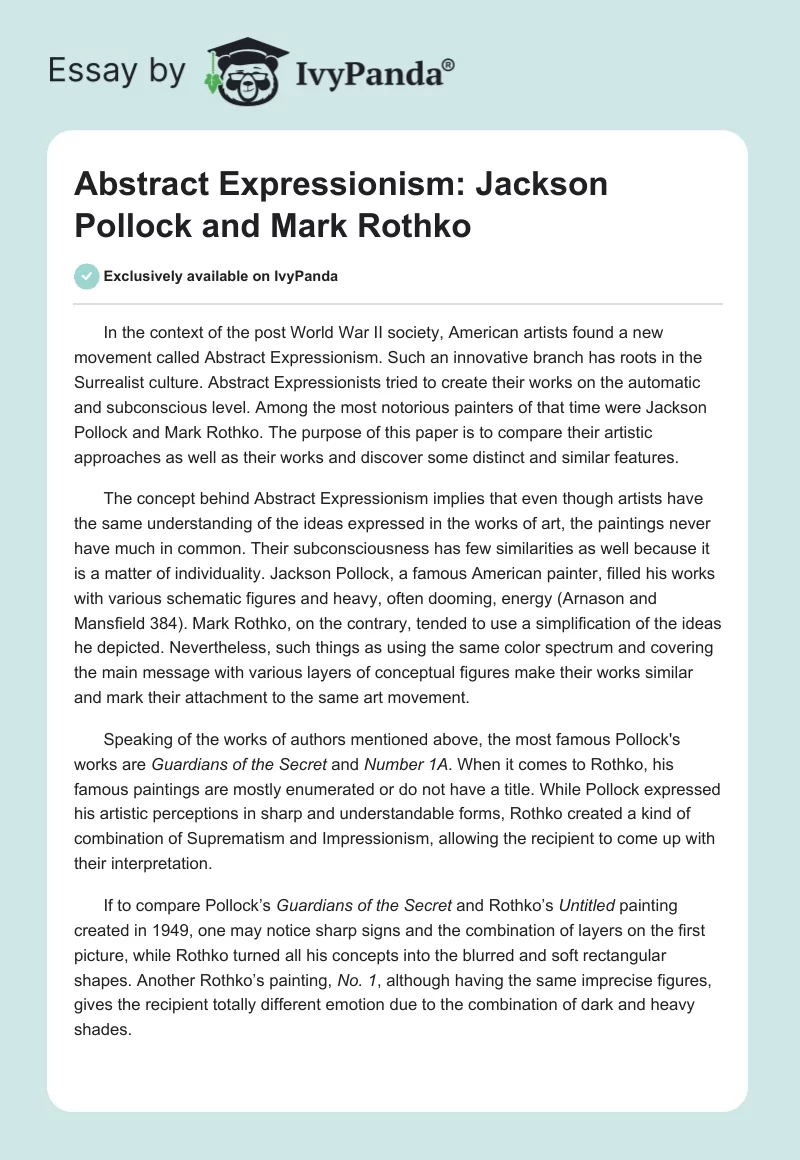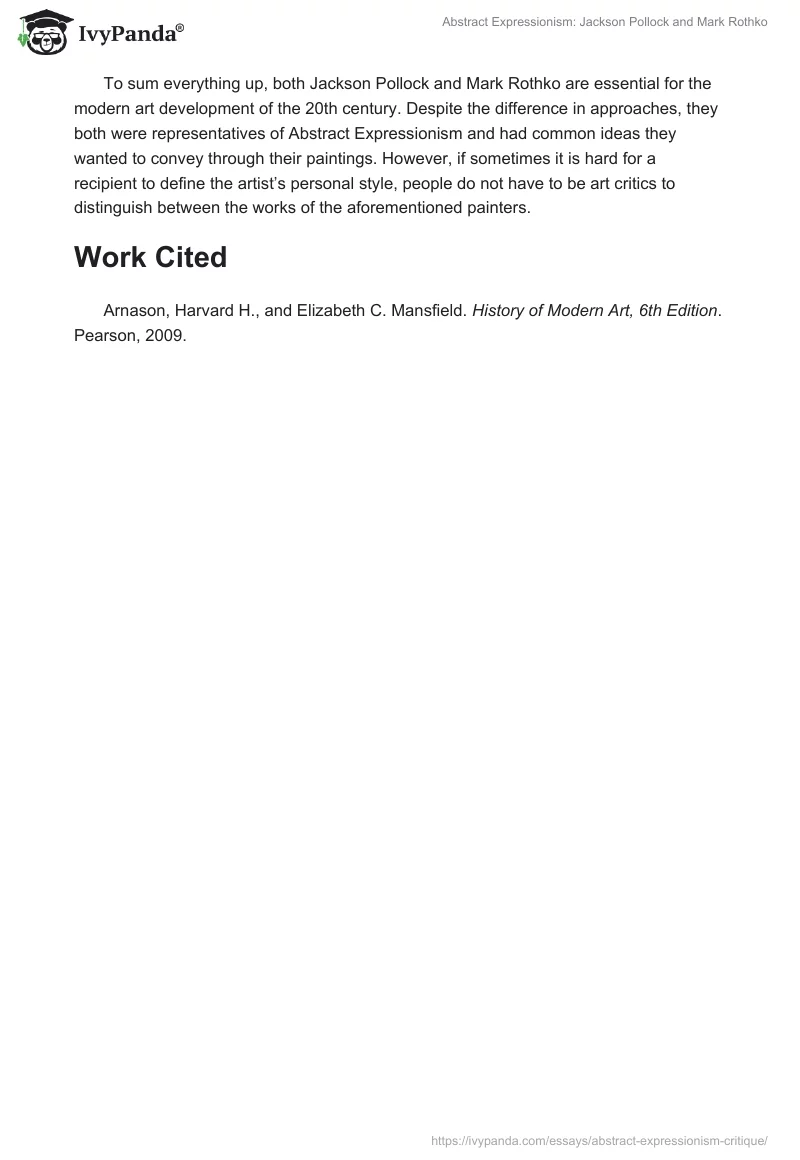In the context of the post World War II society, American artists found a new movement called Abstract Expressionism. Such an innovative branch has roots in the Surrealist culture. Abstract Expressionists tried to create their works on the automatic and subconscious level. Among the most notorious painters of that time were Jackson Pollock and Mark Rothko. The purpose of this paper is to compare their artistic approaches as well as their works and discover some distinct and similar features.
The concept behind Abstract Expressionism implies that even though artists have the same understanding of the ideas expressed in the works of art, the paintings never have much in common. Their subconsciousness has few similarities as well because it is a matter of individuality. Jackson Pollock, a famous American painter, filled his works with various schematic figures and heavy, often dooming, energy (Arnason and Mansfield 384). Mark Rothko, on the contrary, tended to use a simplification of the ideas he depicted. Nevertheless, such things as using the same color spectrum and covering the main message with various layers of conceptual figures make their works similar and mark their attachment to the same art movement.
Speaking of the works of authors mentioned above, the most famous Pollock’s works are Guardians of the Secret and Number 1A. When it comes to Rothko, his famous paintings are mostly enumerated or do not have a title. While Pollock expressed his artistic perceptions in sharp and understandable forms, Rothko created a kind of combination of Suprematism and Impressionism, allowing the recipient to come up with their interpretation.
If to compare Pollock’s Guardians of the Secret and Rothko’s Untitled painting created in 1949, one may notice sharp signs and the combination of layers on the first picture, while Rothko turned all his concepts into the blurred and soft rectangular shapes. Another Rothko’s painting, No. 1, although having the same imprecise figures, gives the recipient totally different emotion due to the combination of dark and heavy shades.
To sum everything up, both Jackson Pollock and Mark Rothko are essential for the modern art development of the 20th century. Despite the difference in approaches, they both were representatives of Abstract Expressionism and had common ideas they wanted to convey through their paintings. However, if sometimes it is hard for a recipient to define the artist’s personal style, people do not have to be art critics to distinguish between the works of the aforementioned painters.
Work Cited
Arnason, Harvard H., and Elizabeth C. Mansfield. History of Modern Art, 6th Edition. Pearson, 2009.


